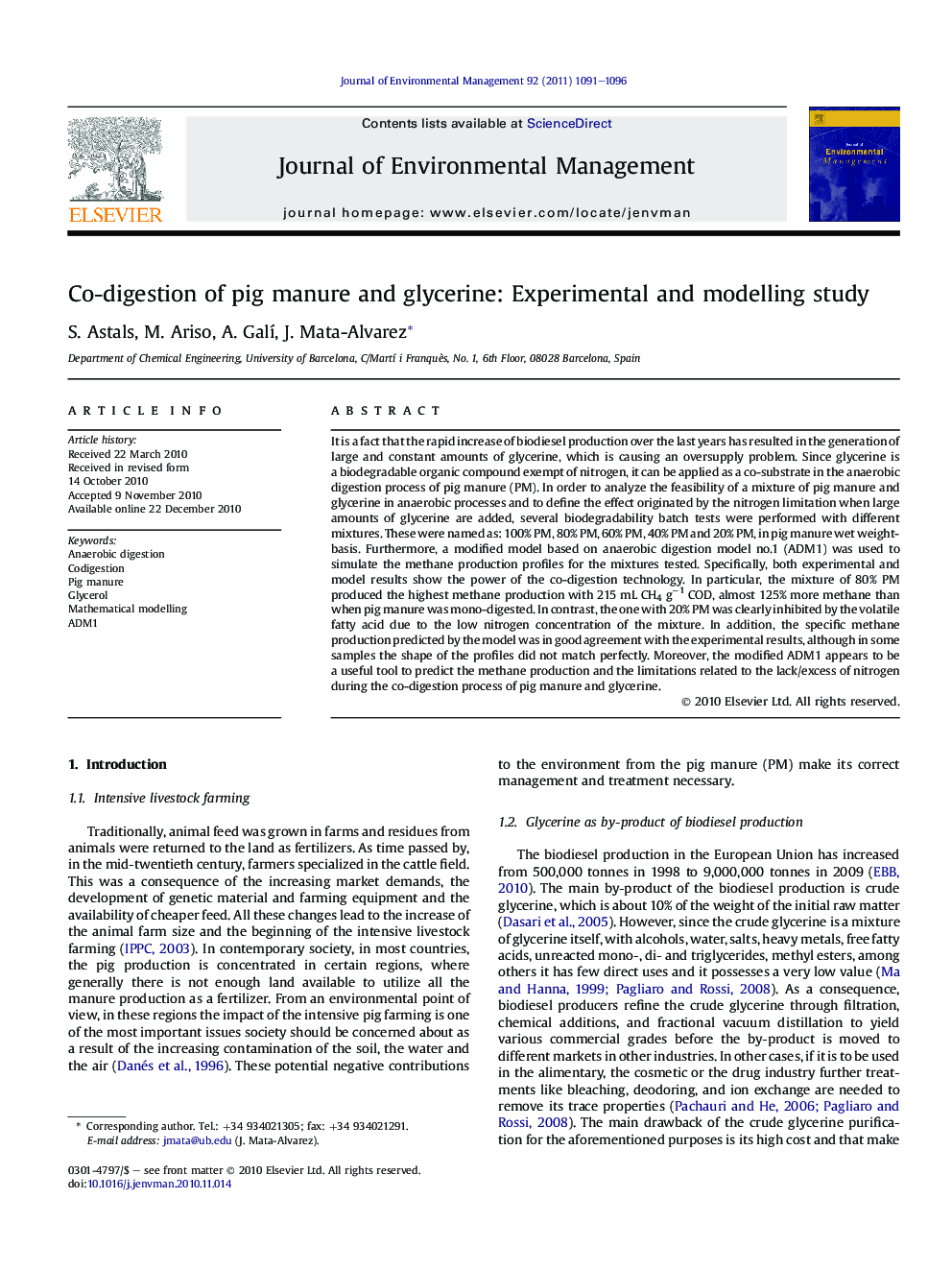| Article ID | Journal | Published Year | Pages | File Type |
|---|---|---|---|---|
| 10505576 | Journal of Environmental Management | 2011 | 6 Pages |
Abstract
It is a fact that the rapid increase of biodiesel production over the last years has resulted in the generation of large and constant amounts of glycerine, which is causing an oversupply problem. Since glycerine is a biodegradable organic compound exempt of nitrogen, it can be applied as a co-substrate in the anaerobic digestion process of pig manure (PM). In order to analyze the feasibility of a mixture of pig manure and glycerine in anaerobic processes and to define the effect originated by the nitrogen limitation when large amounts of glycerine are added, several biodegradability batch tests were performed with different mixtures. These were named as: 100% PM, 80% PM, 60% PM, 40% PM and 20% PM, in pig manure wet weight-basis. Furthermore, a modified model based on anaerobic digestion model no.1 (ADM1) was used to simulate the methane production profiles for the mixtures tested. Specifically, both experimental and model results show the power of the co-digestion technology. In particular, the mixture of 80% PM produced the highest methane production with 215Â mLÂ CH4Â gâ1Â COD, almost 125% more methane than when pig manure was mono-digested. In contrast, the one with 20% PM was clearly inhibited by the volatile fatty acid due to the low nitrogen concentration of the mixture. In addition, the specific methane production predicted by the model was in good agreement with the experimental results, although in some samples the shape of the profiles did not match perfectly. Moreover, the modified ADM1 appears to be a useful tool to predict the methane production and the limitations related to the lack/excess of nitrogen during the co-digestion process of pig manure and glycerine.
Related Topics
Physical Sciences and Engineering
Energy
Renewable Energy, Sustainability and the Environment
Authors
S. Astals, M. Ariso, A. GalÃ, J. Mata-Alvarez,
